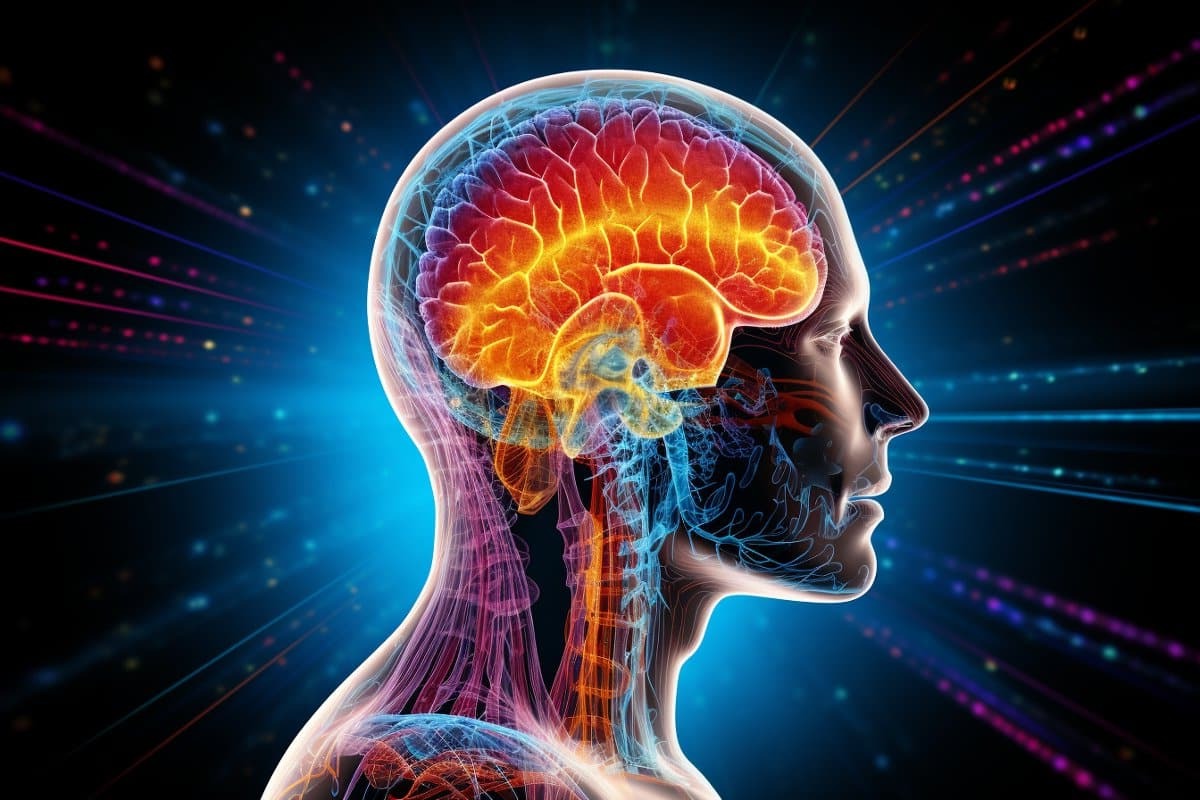
Brain stem neoplasms, often called brain stem gliomas, are tumors that start in the glial cells of the brain stem. This crucial part of the brain connects the cerebrum to the spinal cord and controls vital functions like breathing, heart rate, and balance. Because of its essential role, tumors in this area are tough to treat and usually have a poor outlook. These tumors can be fast-growing, like Diffuse Intrinsic Pontine Gliomas (DIPG), or slow-growing, like focal brain stem gliomas. Understanding the types, symptoms, and treatment options for brain stem neoplasms is key to managing this challenging condition.
Key Takeaways:
- Brain stem neoplasms, or gliomas, affect vital functions like breathing and heart rate. Early detection and treatment are crucial for better outcomes.
- Research and advancements offer hope for improved treatments and outcomes for brain stem gliomas in the future. Continued progress is underway.
Understanding Brain Stem Neoplasms
Brain stem neoplasms, often called brain stem gliomas, are tumors that start in the glial cells of the brain stem. This part of the brain connects the cerebrum to the spinal cord and controls vital functions like breathing and heart rate. Let's dive into some key facts about these challenging tumors.
-
Definition and Location
Brain stem gliomas originate in the glial cells of the brain stem, which includes the midbrain, pons, and medulla oblongata. -
Types of Brain Stem Gliomas
There are several types, including Diffuse Intrinsic Pontine Gliomas (DIPG) and Focal Brain Stem Gliomas. DIPG is fast-growing and forms in the pons, while focal gliomas are slower-growing and can develop in various parts of the brain stem.
Causes and Symptoms
Understanding what causes these tumors and recognizing their symptoms can help in early detection and treatment.
-
Causes and Risk Factors
The exact causes are not fully understood, but genetic mutations and environmental factors may play a role. Neurofibromatosis Type 1 (NF1) is a genetic condition that increases the risk of developing gliomas. -
Symptoms
Symptoms vary depending on the tumor's location and type. Common symptoms include severe headaches, vision problems, balance issues, motor weakness, behavioral changes, increased sleepiness, and frequent nausea and vomiting.
Diagnosis and Treatment
Diagnosing and treating brain stem gliomas involves a combination of techniques and approaches.
-
Diagnosis
Diagnosis typically involves neurological exams and MRI scans with gadolinium to provide accurate images of the brain and identify the tumor's location. -
Treatment Options
Treatment depends on the tumor type and location, as well as the patient's overall health. Options include chemotherapy, radiation therapy, and surgery, though surgery is often challenging due to the brain stem's critical location.
Childhood and Adult Brain Stem Gliomas
Brain stem gliomas affect children and adults differently, with varying prognosis and treatment approaches.
-
Childhood Brain Stem Gliomas
These tumors are most common in children, accounting for about 15% of childhood brain tumors. DIPG in children is particularly aggressive with a poor prognosis, while focal gliomas are slower-growing and may have a better outlook. -
Adult Brain Stem Gliomas
In adults, brain stem gliomas are rare, making up only 1%–2% of intracranial gliomas. Adults often have low-grade phenotypes, resulting in a better prognosis compared to children.
Prognosis and Challenges
The prognosis for brain stem gliomas varies widely, and treating these tumors presents significant challenges.
-
Prognosis
The prognosis depends on the tumor type and location. DIPG has a very poor prognosis with a median survival time of about 24 months, while focal gliomas may have a better outlook, especially if they are low-grade and surgically accessible. -
Surgical Challenges
Surgery is highly challenging due to the brain stem's critical functions and the risk of neurological damage. However, it may improve survival for low-grade, well-defined focal gliomas.
Radiation and Chemotherapy
Radiation and chemotherapy are common treatments for brain stem gliomas, each with its own approach and effectiveness.
-
Radiation Therapy
Radiation therapy is often used for DIPG. External radiation involves high-energy beams targeting the glioma, while internal radiation uses tiny radioactive seeds implanted near the tumor. -
Chemotherapy
Chemotherapy involves administering cancer-killing drugs to slow tumor growth. It can be used alone or combined with radiation therapy and surgery.
Symptom Relief and Epidemiology
Managing symptoms and understanding the epidemiology of brain stem gliomas can provide better patient care.
-
Symptom Relief
For slow-growing gliomas, a wait-and-see approach may be recommended, involving close monitoring of tumor growth and symptoms. Treatments like surgery, chemotherapy, and radiation can help relieve symptoms, though there is no cure. -
Epidemiology
Brain stem gliomas are relatively rare but can occur at any age. They are most common in children and adolescents, accounting for about 10.8% of primary central nervous system tumors in this age group.
Pathological Classification and Research
Classifying these tumors and ongoing research are crucial for developing better treatments.
-
Pathological Classification
Brain stem gliomas are classified based on their pathological characteristics. Common types include high-grade diffuse intrinsic tumors and low-grade focal lesions like pilocytic astrocytoma and ependymoma. -
Research Focus
Research aims to improve understanding of these tumors' biology, identify homogeneous subgroups, and develop more effective therapies.
Brain Stem Function and Anatomy
The brain stem's role and structure are vital to understanding the impact of these tumors.
-
Brain Stem Function
The brain stem regulates basic functions like breathing, heart rate, and balance, communicating with the body through a complex network of neurons and glial cells. -
Brain Stem Anatomy
The brain stem consists of three parts: the midbrain, pons, and medulla oblongata. The pons is the most common site for DIPG.
Future Directions
Advancements in treatment and ongoing research offer hope for better outcomes in the future.
-
Future Directions
Advancements in neurosurgery, radiation therapy, and chemotherapy hold promise for improving outcomes. Ongoing research into the molecular pathology of these tumors may lead to more targeted and effective treatments. -
Hope for the Future
Continued research and technological advancements aim to provide better treatment options and improve the prognosis for patients with brain stem gliomas.
Final Thoughts on Brain Stem Neoplasms
Brain stem neoplasms, especially Diffuse Intrinsic Pontine Gliomas (DIPG), pose significant challenges due to their critical location and aggressive nature. These tumors disrupt essential functions like breathing and heart rate, making treatment complex. Symptoms such as headaches, vision problems, and motor weakness often signal their presence. Diagnosis involves neurological exams and MRI scans, while treatment options include chemotherapy, radiation therapy, and surgery. However, surgery is often risky due to the brain stem's vital role. Prognosis varies, with DIPG having a poor outlook compared to focal gliomas. Ongoing research aims to improve understanding and treatment, offering hope for better outcomes. Understanding these tumors' types, symptoms, and treatments is crucial for providing the best care. Advances in medical science and research continue to pave the way for more effective therapies, giving patients and families hope for the future.
Frequently Asked Questions
Was this page helpful?
Our commitment to delivering trustworthy and engaging content is at the heart of what we do. Each fact on our site is contributed by real users like you, bringing a wealth of diverse insights and information. To ensure the highest standards of accuracy and reliability, our dedicated editors meticulously review each submission. This process guarantees that the facts we share are not only fascinating but also credible. Trust in our commitment to quality and authenticity as you explore and learn with us.


